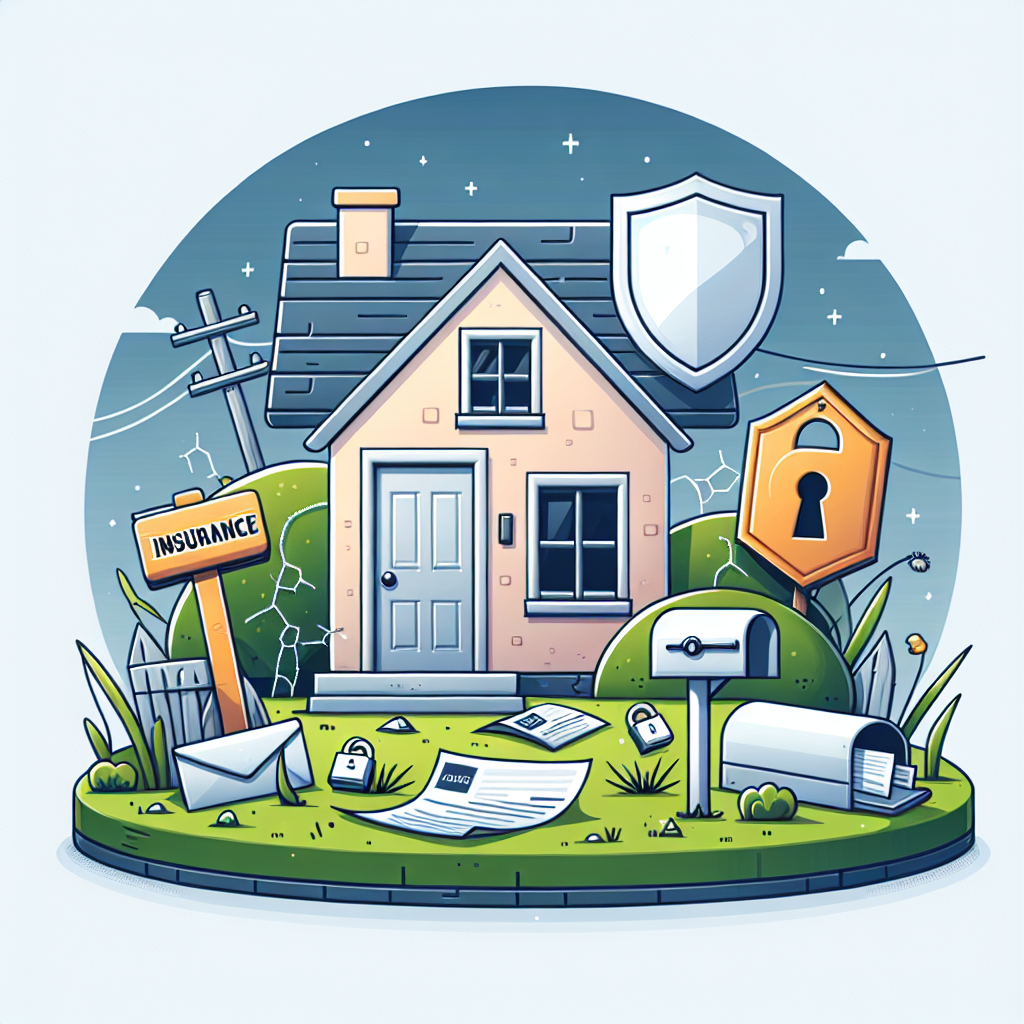Filed under Home Insurance on
Comprehensive Guide to Home Insurance Coverage B

When it comes to safeguarding your most valuable asset, home insurance plays a pivotal role in your financial security strategy. While many homeowners are familiar with the basic concepts of home insurance, understanding its intricacies, such as Home Insurance Coverage B, can be more challenging. In this comprehensive guide, we delve into the details of Home Insurance Coverage B, covering everything from what it entails to why it's crucial for homeowners. Throughout this article, we will explore its implications, provide expert insights, and address common questions, helping you make informed decisions about your home insurance coverage.
Understanding Home Insurance Coverage B
Home insurance policies consist of several components, commonly referred to as coverage sections. Each section addresses different aspects of potential risks associated with homeownership. Home Insurance Coverage B specifically focuses on "other structures" on your property. These structures can include garages, sheds, fences, and even gazebos, among others.
What Does Coverage B Include?
Home Insurance Coverage B primarily covers structures that are not directly attached to your main residential building. Here are some common examples:
- Detached garages: Often used for vehicle storage, workshops, or additional storage space.
- Storage sheds: Useful for housing lawn equipment, tools, and seasonal items.
- Fences: Provide privacy and security, especially important for properties with children or pets.
- Gazebos or pergolas: Enhance your outdoor living spaces.
- Guesthouses or standalone studios: Used for additional accommodation or office space.
Why is Coverage B Important?
Imagine a scenario where your detached garage is damaged by a severe storm or your fence is vandalized. Replacing or repairing these structures can be costly. Home Insurance Coverage B offers protection for such situations. Without adequate coverage, you might face significant financial burdens in restoring your property to its previous condition.
Factors Affecting Coverage B Limits
When determining the extent of Home Insurance Coverage B, several factors come into play. Understanding these can help you assess if your current coverage is adequate and whether adjustments are necessary:
Property Value and Replacement Cost
The value of your home and the replacement cost of any other structures significantly impact coverage limits. It's essential to ensure your coverage reflects realistic repair or replacement costs. Over time, construction costs may increase, so periodic evaluation is necessary.
Types of Structures Present
Your specific outbuildings and structures will also determine coverage requirements. For instance, a high-end gazebo may require higher coverage limits than a simple metal shed.
Location and Environmental Risks
Properties in regions prone to natural disasters, such as hurricanes, tornadoes, or floods, might require additional coverage due to elevated risk. Also, consider any environmental hazards unique to your location.
How to Customize Coverage B to Suit Your Needs
Personalizing your Home Insurance Coverage B to align with your specific needs can provide peace of mind and financial protection. Here are some strategies to ensure your coverage is optimal:
- Conduct a Comprehensive Inventory: Document all external structures on your property, including details such as size, materials, and current condition, which will aid in accurately estimating coverage needs.
- Evaluate Replacement Costs: Consult with local contractors or use online tools to estimate the current replacement costs for outbuildings, considering both materials and labor.
- Consider Upgrades or Add-Ons: Depending on the value and use of your outbuildings, you may want to explore additional endorsements or riders that enhance your coverage.
- Review Policy Regularly: Set a schedule to review your home insurance policy annually, updating it as necessary based on changes in construction costs, additions to your property, or structural modifications.
Expert Opinions on Coverage B
Industry experts emphasize the importance of adequate Home Insurance Coverage B. According to John Thompson, an insurance consultant with over two decades of experience, "Homeowners often overlook the value of separate structures on their property. Ensuring these are adequately covered can save homeowners from unexpected expenses that can disrupt financial stability."
Similarly, recent insurance studies suggest that while many homeowners have some form of Coverage B, they might be underinsured. Considering the rising costs of materials and construction, reassessing coverage limits is highly recommended.
Frequently Asked Questions About Home Insurance Coverage B
How Much Coverage B Do I Need?
The appropriate amount of Coverage B varies based on the value and nature of your additional structures. Average policies might allocate 10% of the main dwelling’s insured value to Coverage B, but this can be adjusted based on specific needs and risks.
Is Coverage B Automatically Included in Home Insurance Policies?
Most standard home insurance policies include some form of Coverage B. However, the limits and specifics can vary, so it's important to review and customize your policy accordingly.
Can I Increase My Coverage B Limits?
Yes, you can often increase your Coverage B limits by adjusting your policy or adding endorsements. It's advisable to discuss such changes with your insurance provider to understand any cost implications thoroughly.
Are My Outbuildings Covered for All Types of Damage?
Coverage B protects against a variety of risks, but not all. Common exclusions might include damage from earthquakes or floods unless specific endorsements are in place. Review your policy details for precise information.
Current Trends in Home Insurance
The home insurance industry has been experiencing shifts influenced by changing climate patterns, advancements in building materials, and evolving homeowner needs. As a result, policies, including Coverage B, are adapting:
- Green Building Initiatives: More insurers are offering incentives for sustainable and energy-efficient construction, which can affect the types of coverage available for outbuildings.
- Technology Integration: The use of smart home devices for monitoring and safeguarding properties can play a role in insurance assessments and premiums.
- Climate Resilience: Insurers are placing a greater focus on resilience against climate-related events, adjusting coverage terms and premiums to reflect increased risks.
Conclusion
Home Insurance Coverage B plays an essential yet often underappreciated role in protecting your investment in additional structures on your property. By understanding its components, evaluating your individual needs, and staying informed about industry trends, you can ensure that your home insurance policy provides comprehensive protection. Take proactive steps to consult with experts, regularly review your coverage, and make adjustments as needed. With the right approach, you can achieve both peace of mind and financial security.





